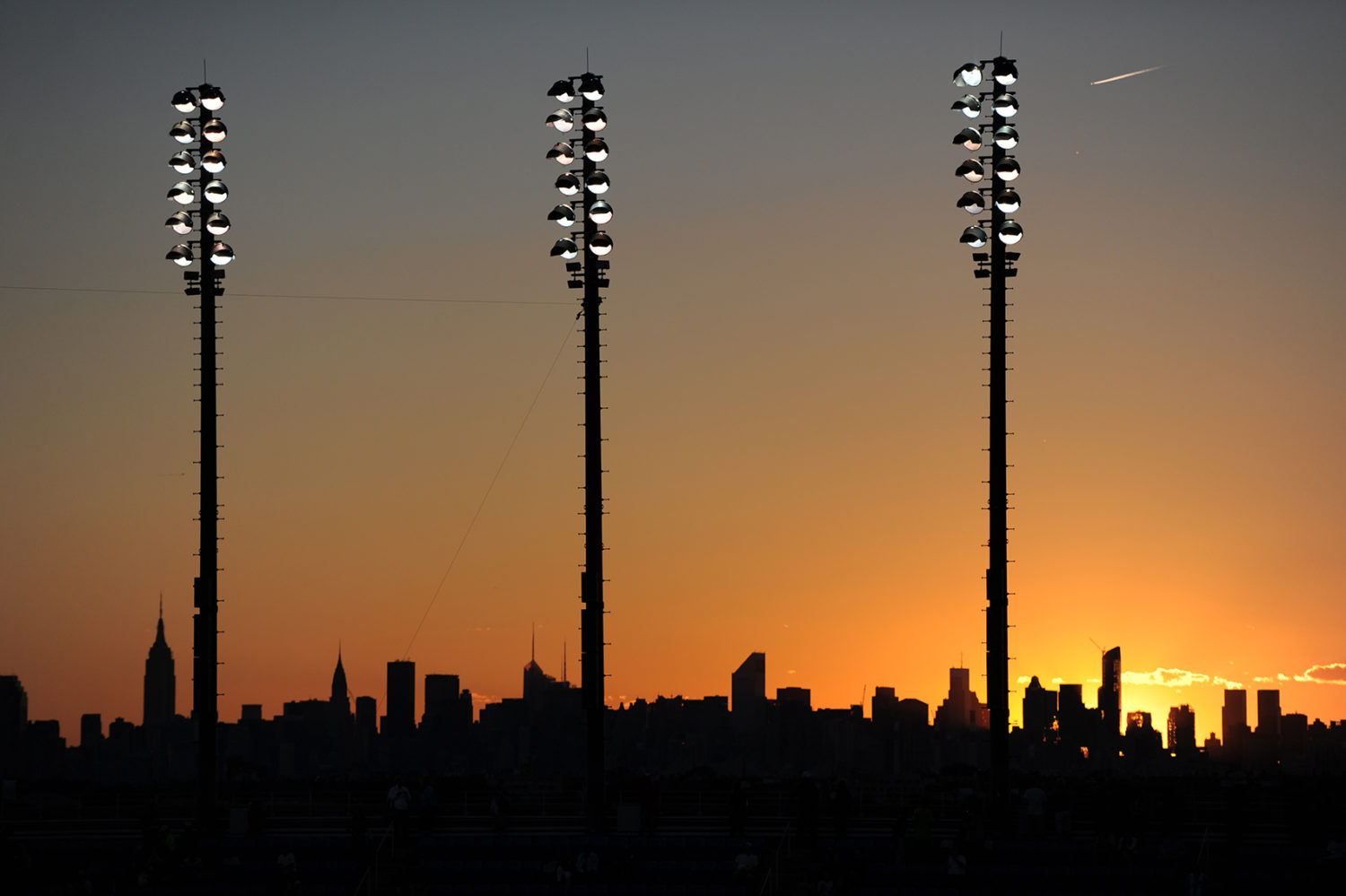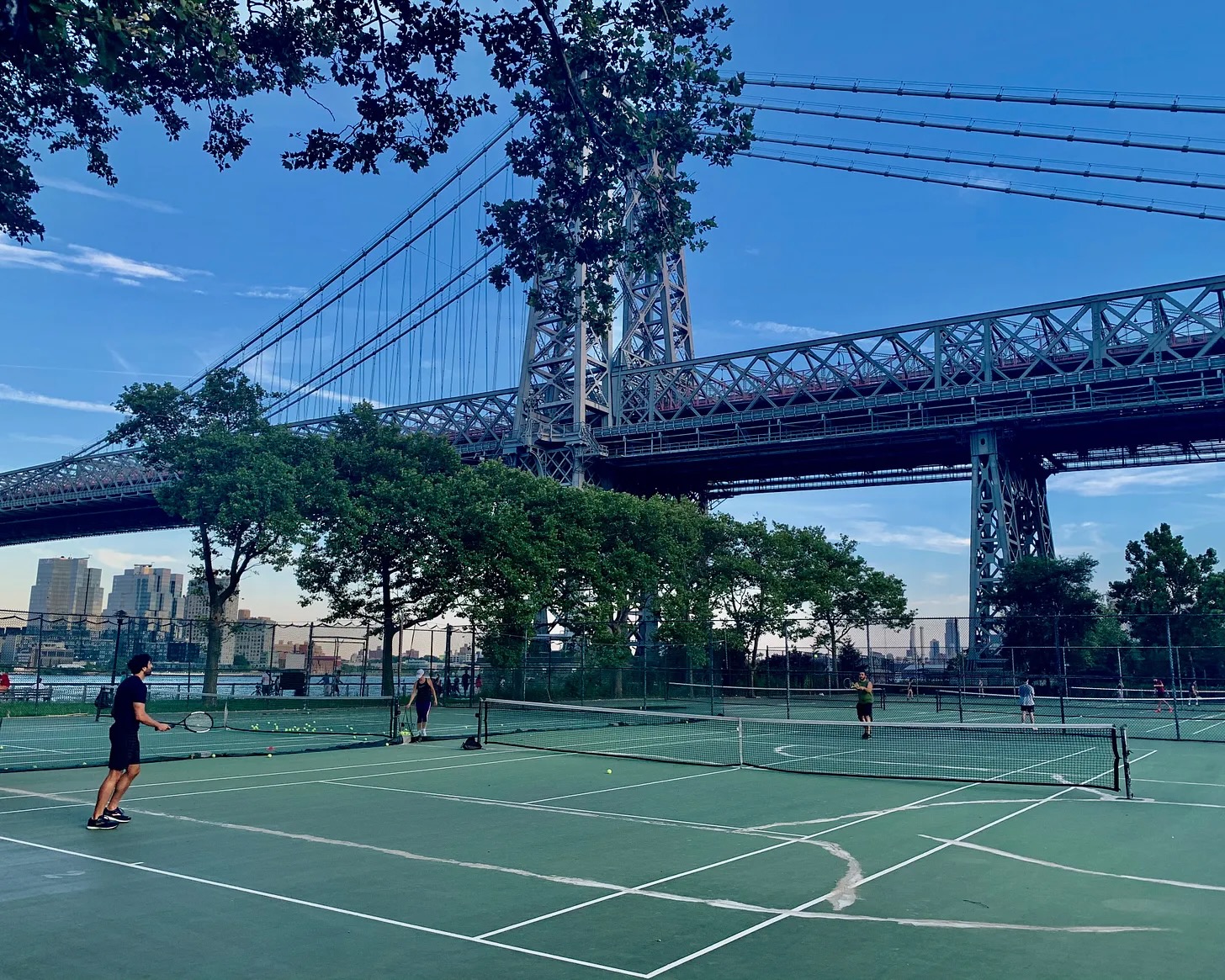“New York was no mere city. It was instead an infinitely romantic notion.”
Joan Didion

The arid, Californian sun beats down on me as I begin to pack my bags for the US Open. I pick through my dresses and summer wear, my comfortable and not so comfortable shoes, as my brain fills with images of the New York I’ve consumed over the years. From sitcoms to films to music to the writings of many great authors, New York’s image is palpable and ever present. I’ve seen her as many have seen her; broadcast across not only the remaining 49 states, but the world as well. Watching her from afar in the small bedrooms I’ve lived in across Northern and Southern California. She’s become an amalgamation of all the media made in her image, of all the odes to her we’ve consumed. We feel we know her, or the image of her we’ve been shown. She’s cultured, never sleeps, storied and most importantly: she’s authentic.
But even without those images broadcast across our screens, there are distinct echoes of New York on my own Californian shore. There’s the Brooklyn Dodgers who moved west to become the Los Angeles Dodgers — or as we call them Los Doyers. And who can forget their age-old rivalry with the Manhattan Giants? Who themselves moved west to San Francisco, poetically maintaining their feud with a dual journey from sea to shining sea.
But not all echoes are one way. Most prescient to my current voyage to the US Open, are the halls of Arthur Ashe Student Health and Wellness Center that nursed me back to health many times as a student at UCLA. An inclusive, safe space where any student could go to get care without question or judgment. Named after Arthur Ashe, who played for UCLA tennis winning both the NCAA singles and doubles titles, before becoming the international titan of tennis, civil rights and social justice he became known to be. Now the US Open’s largest stadium, where the greatest matches are played, bears his name — the Arthur Ashe Stadium.
Yes, so much connects the two cities of LA and NYC, of California and New York. But just as the image of New York rings in the minds of children elsewhere as a romantic place that’s served as the backdrop of so many of their favorite stories, so does it ring in the minds of Californians.
I hate California, I want to go to the east coast. I want to go where culture is like, New York, or Connecticut or New Hampshire.

Are the lines Christine Mcphersen acerbically points at her mother in Lady Bird. Christine, who prefers to go by “Lady Bird” – a stage name worthy of a New York transplant – has the same romantic notion as many teenagers, and even adults, around the United States. You’re meant to giggle at the idea of Connecticut and New Hampshire having any more culture than California, and perhaps to acquiesce to the idea that New York holds a special place in the cultural memory of the United States. After all, not only is New York seen as a cultural capital of the USA, it’s also old. It’s established in the memory of the USA. In fact it’s one of the first 13 states. A history that is distant to those of us from California and the west.
California is young when it comes to being a part of the “United States of America”, declaring statehood in 1850 after being a territory of the Republic of Mexico, a province of New Spain and of course its own pre-colonial history prior to Spanish expansion and colonization. This difference is so marked that in our schools we have to learn our history in parallel with those of the “First 13 States”. Creating a separation in our minds; one that makes clear that New York, Connecticut, New Hampshire and so on to the remaining 10 original states, have a history different from ours. A history that’s as old as the formation of the United States. A history that converges with that of the west through the bloody movement of manifest destiny and westward expansion.
One might gasp at Christine asserting that she “hates” California. But consider for a moment the media you yourself have consumed about California and New York. In these sitcoms and films New York is glamorous, filled with culture and is above all “real”. California is sunny, stuck-up and above all “fake”. Of course these simplifications aren’t true and Christine eventually realizes the youthful ignorance of her own words. Coming to a crescendo of emotion as she sits on the steps of a Catholic Church in New York listening to hymns pour out the heavy, wooden doors. Their sound transporting her to thoughts of her own hometown of Sacramento, California, leading her hands to grasp for her phone and dial home. An emotional moment anyone who’s moved far away from home can understand. And a moment particularly full of Californian imagery. Catholic Churches line our state, their missions forming “El Camino Real” — something far apart from the Protestant and Quaker history of New York and the East Coast.

That moment where Christine reaches for her phone, led by the pull of homesickness, not only holds imagery inherent to California but also of “New York”. It’s a moment of yearning that many New Yorker’s themselves can understand. They say New York is a world unto itself. Made by the many people who move there from all corners of the world, crossing over its waters past the protruding figure of the Statue of Liberty and into Ellis Island. It’s many Burroughs and blocks full of food, sights and sounds unique to many different cultures. Home’s away from home built in a new and daunting place. Just as the steps of that Catholic Church were for Christine.
I said earlier that New York is an amalgamation of all the images we’ve consumed, and for Californians it’s the images we’ve consumed in our history books as well. New York is towering not only in its importance in art and media but in a historical sense as well. As people from around the world rush into NYC for the hectic frenzy that is the US Open, frenzied themselves to see for the first time how that image of NYC they’ve consumed through their screens and the pages of their books holds up — so will I.
This and all that I’ve ruminated on above is why it only makes sense that the US Open is held in NYC. New York is not only an amalgamation of all the stories we’ve read, heard and watched, it’s also an amalgamation of our 50 states. At some point in time some child, in some bedroom in the vast United States, has sat and watched a movie, read a book, or listened to a song about New York and made a silent pact to themselves right then and there that they’d one day live in that city. Just as Christine did. And just as so many others have done. Because not only is New York a fantastically romantic notion that graces our screens and pages, it also holds a distinct place in the historical memory of the United States. Those two truths meld together to make New York a unique cultural and historical landmark. Similar to her Statue of Liberty. And one perfectly fit to host the US Grand Slam.